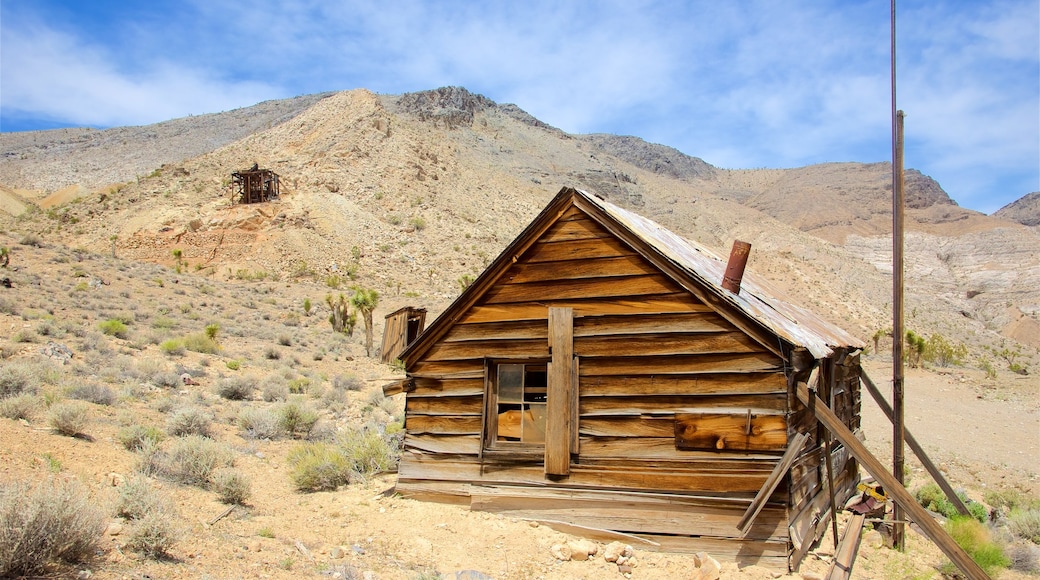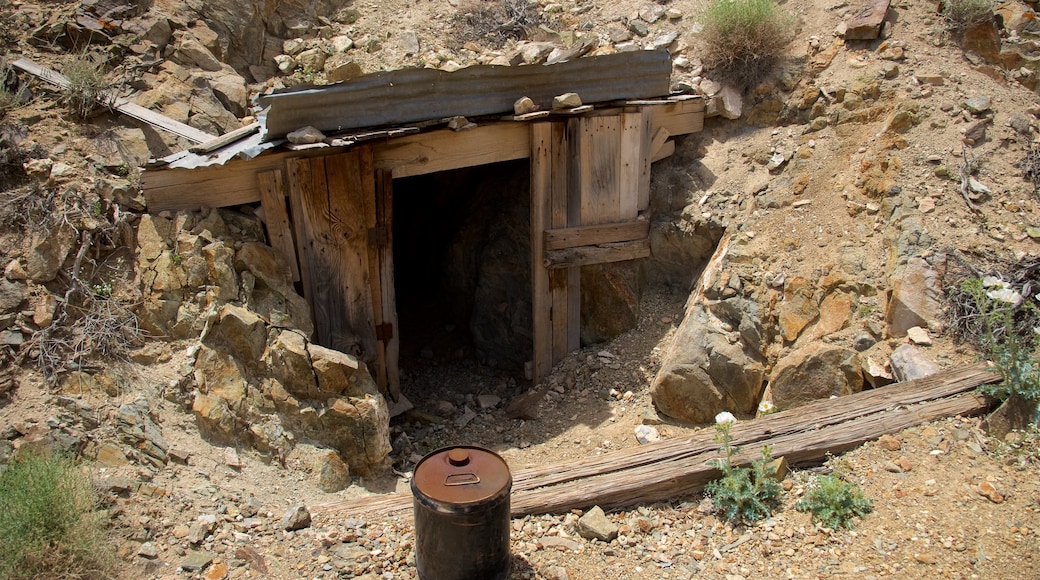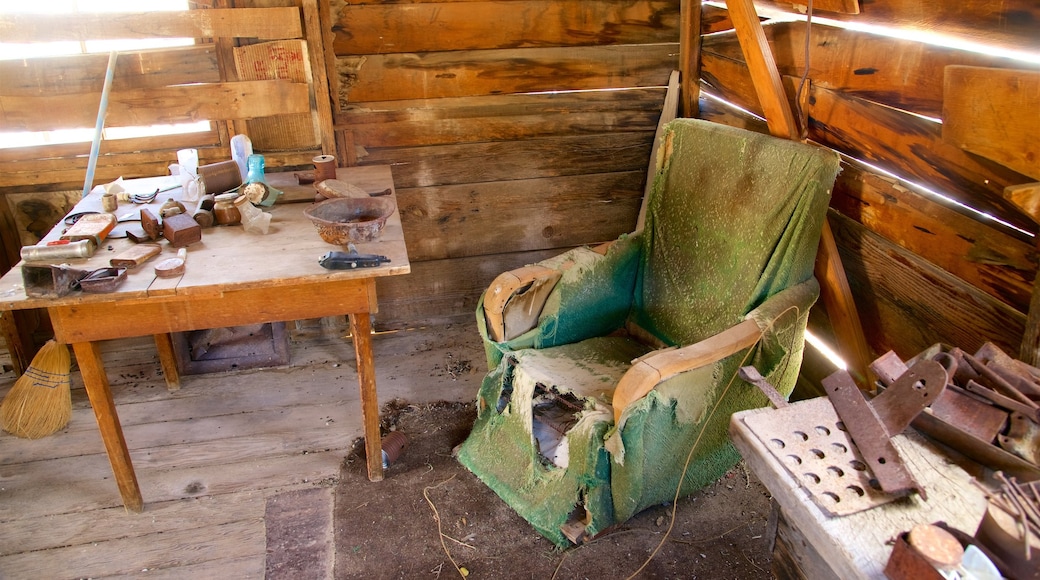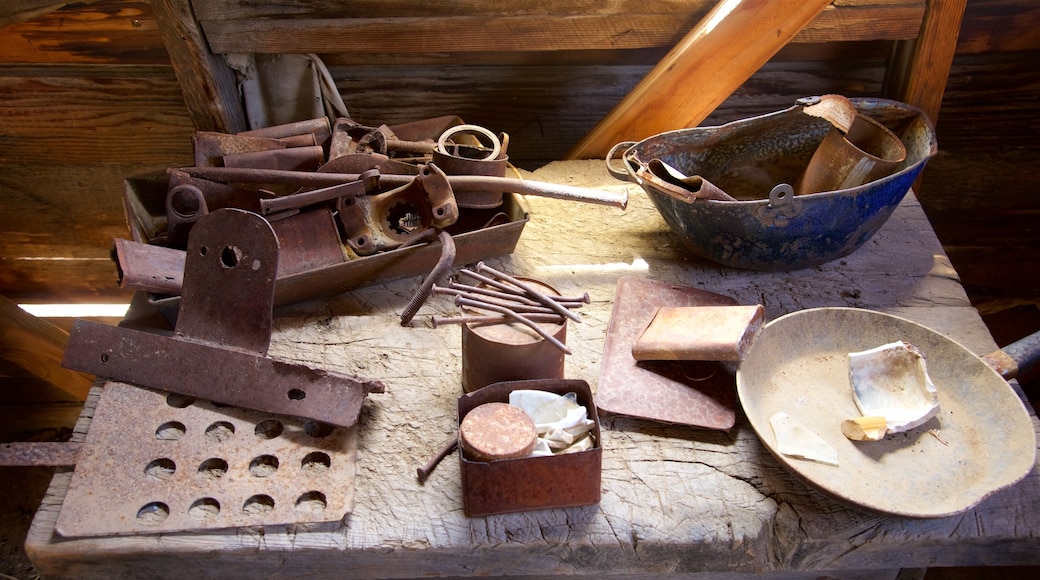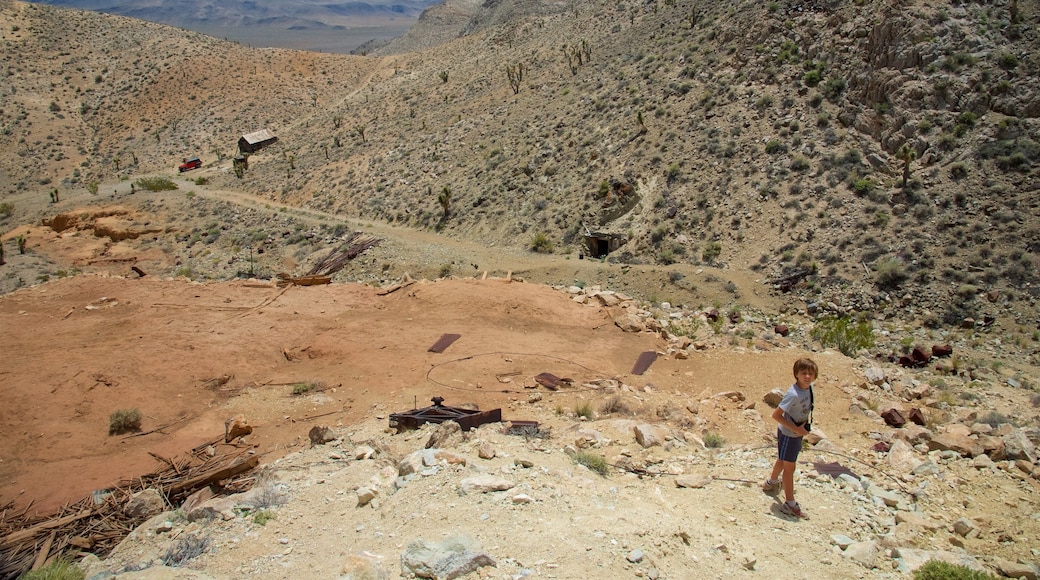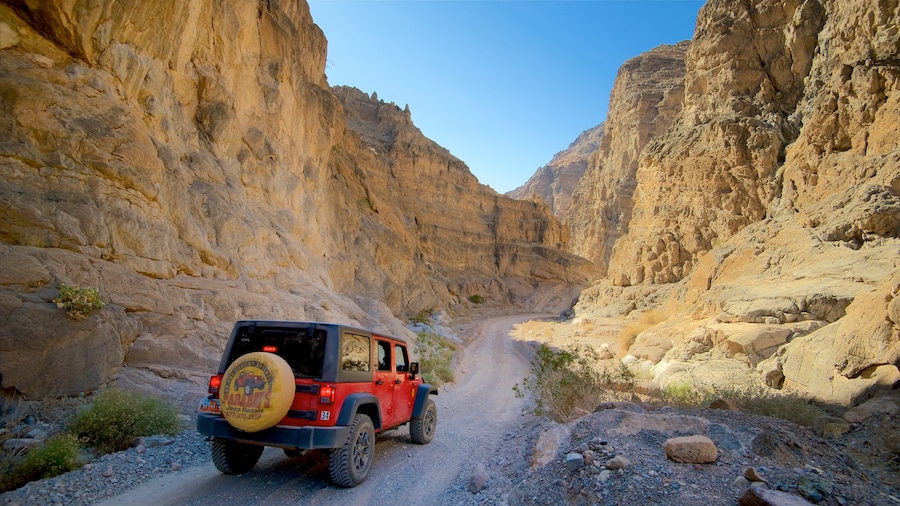Preserved by its remoteness and the dry desert heat, the remains of an early 20th-century mine make it look as though it was abandoned just a few years ago.
In 1907 Bert Shively lost his donkey and found the gold seam that would become the Lost Burro Mine. It was abandoned in the 1970s, but the mineshafts that dig into the cliff face are still pristine. Far from everything, even by Death Valley standards, the mine and the adjoining settlement include a cabin and its outhouse, offering an incredible glimpse into what life was like. Spend the time to get out here to be repaid with a unique and arresting perspective.
Get away from the hot sun by ducking into the mineshafts, which still bear the marks of the miners’ equipment on the wall. Head back out and wander around the buildings that remain, including the mill that once ground up the ore in search of even the tiniest quantities of gold. Examine the rusty equipment that lies forgotten on the rocky ground, from ore bins to smelters and sluice boxes.
Go down the hill to the settler’s cabin, made of wooden planks, now bleached by the harsh sun. Step in through the doorway and see what remains of the life of the man who lived here, from his narrow cot and upholstered chair to the utensils and plates that still sit on the table. The remoteness of the mine has saved it from vandals. Take advantage of that to appreciate the small details that characterized the harsh life of a Death Valley miner.
The Lost Burro Mine is in the northern half of Death Valley National Park, not far from Teakettle Junction. It is remote, down a small road that also leads to the Racetrack. Drive here in 2.5 hours from Stovepipe Wells, in 2 hours from the western park entrance or in almost 3 hours from Furnace Creek. The final portion of the road requires a four-wheel drive, but it is also possible to walk up the last mile. Bring extra water on the drive and multiple flashlights if you wish to explore the mineshafts themselves.
